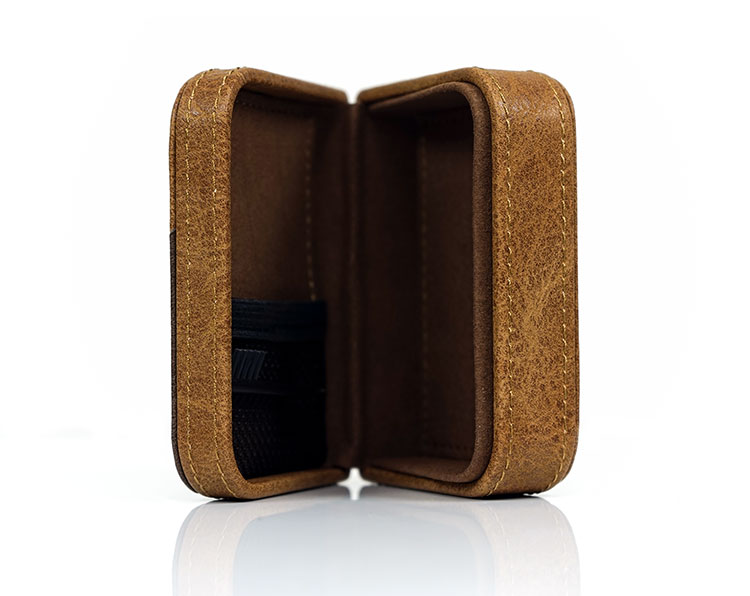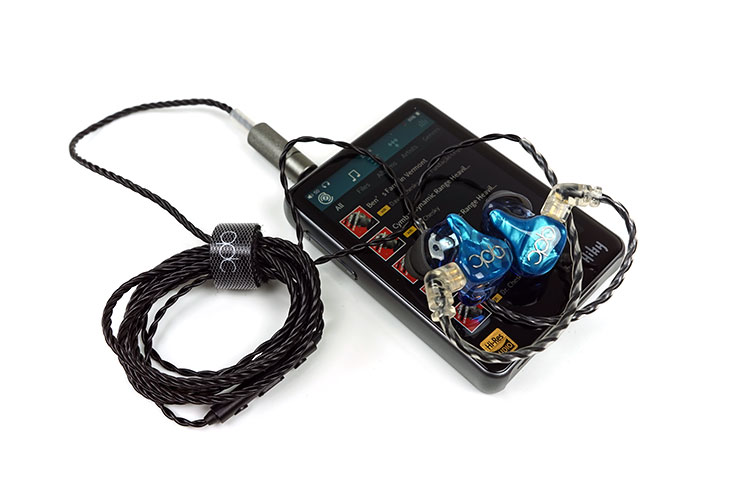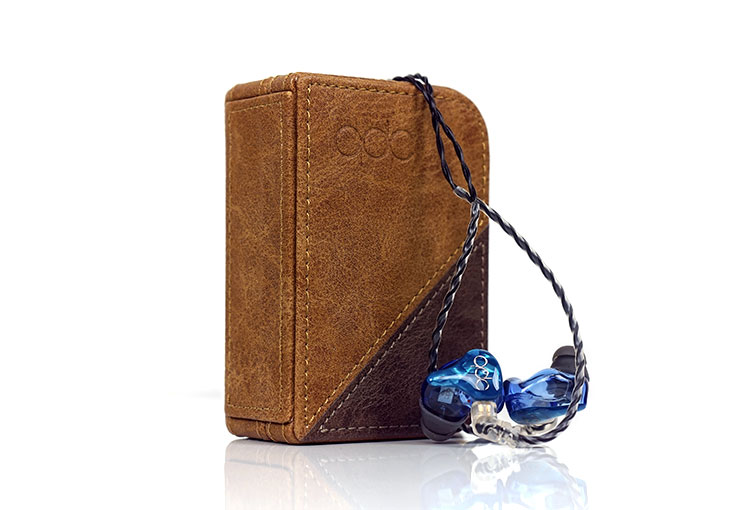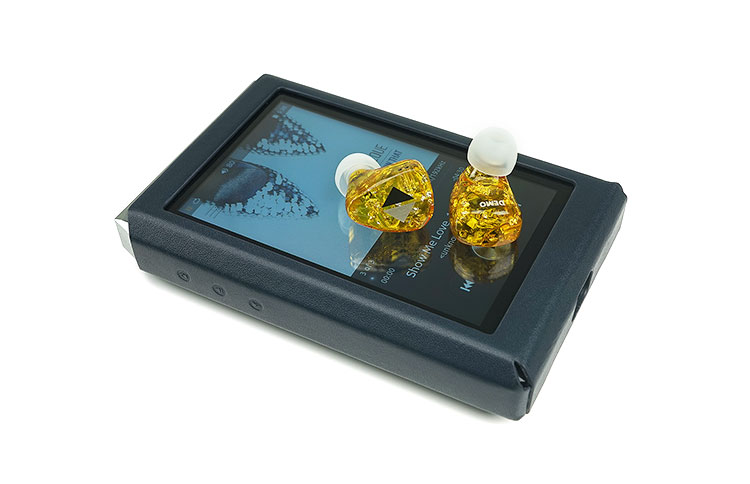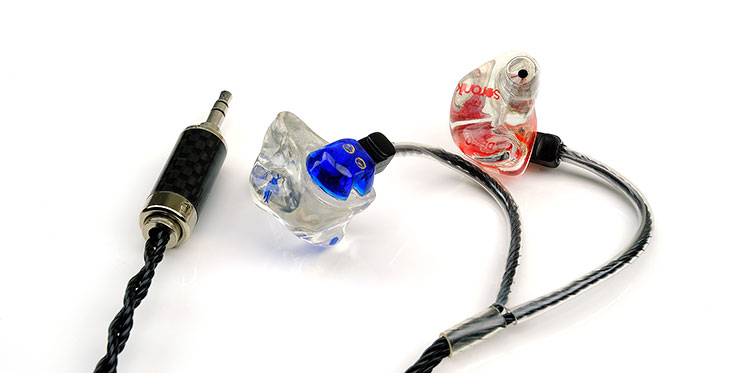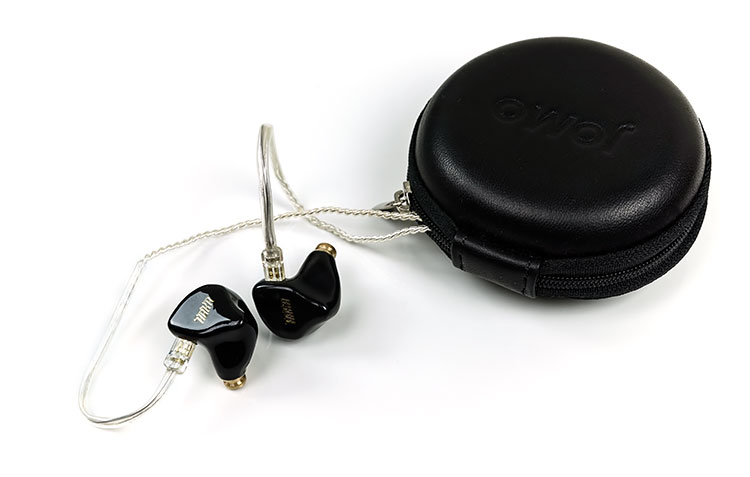The QDC Neptune is the company’s entry-level single balanced armature universal IEM. It retails for $198.
Disclaimer: The qdc Neptune sent to us for the purposes of this review is a sample and does not have to be returned to qdc. Thank you to distributors Soundwave Audio Visual Store and qdc for giving us this opportunity.
To read more about qdc products reviewed on Headfonics, click here.
Note, this review follows our new scoring guidelines for 2020 which you can read up on here.
Though I did not directly receive the Neptune from qdc I had the pleasure of meeting them at CanJam Singapore 2018 a few weeks ago.
This is the first time I really got to discuss in detail their product lineup as well as inspect the quality of their craftsmanship. Our previous review of their high-end Gemini was expertly discussed last year so the Neptune is my own first encounter.
For those that do not know qdc is a Chinese specialist in custom monitors ranging from entry-level models such as the Neptune up to summit-fi creations such as the Gemini and Anole V6.
I strongly suggest you try out their range. From my own demo time, I think these guys are dark horses in terms of impressive sound and unbelievable build quality.
Tech Highlights
The Neptune is a single full-range balanced armature universal IEM priced at $198. It is qdc’s entry-level universal IEM and priced at a point that should appeal to a wide base of more budget-conscious audiophiles as well tap into music-loving consumers in general.
The 10Ω impedance rating is further evidence that qdc see the Neptune as an IEM that should match with just about any source rather than purely summit-fi or powerful DAPs.
Fan Base
The use of a single BA is also growing in appeal for IEM designers. In fact, I would argue there is quite a healthy fan base growing over the last year or so considering the amount of single BA IEM’s coming out around this price point. People enjoy single BA’s because of their generally accepted tonal coherence compared to many multi-BA alternatives.
qdc Craft
The final pitch is the semi-custom design for the Neptune. qdc has gone on record as stating the Neptune is hand designed and shaped using tons of ear impressions they have received over the years to produce what they view as the most typical universal ear fit. We have seen variations of this before such as iBasso and Jomo and they tend to work very well indeed.
Design
Form Factor
From the top down the Neptune looks very much like custom monitors so qdc is true to their word in building a semi-custom design. This is an acrylic hollow body shell with an inset faceplate. qdc are using a short nozzle and protruding lip for the Neptune as the only concession to universal design standards. The short nozzle will allow for the tips to take up the slack that qdc cannot design for and that is our unique ear canals.
The Neptune form factor is as I expected and consistent with the likes of iBasso’s IT01 and Jomo Audio’s Haka. There is a concaved contour underneath specifically to accommodate the outer ear concha ridge in your ear.
In doing so it relieves a little bit of pressure that can build up with other IEMs that lack that dip. It may seem trivial but it is a big thing once you start wearing them for long listening sessions.
Materials & Finish
The entire design is handcrafted using blue mica translucent body shell finish and an ‘ultramarine transparent’ faceplate. There is only one tone and set of materials for the Neptune so you cannot customize the color scheme. It does fit in though with its ‘watery’ theme and the faceplate, in particular, has some nice perceptual depth to it.
It is also smooth, bubble, and imperfection-free. Considering they are all handmade I find this level of finish to be nothing short of astonishing. You have to remember it is a single look, made time and time again by hand. Either you get good at it or you get sloppy and bored and qdc certainly are not the latter.
Connectors
Now, this is where it gets interesting. As far as I can see the Neptune uses a 0.78mm 2-pin connection however with 2 key differences.
Protruding Socket
The first is that it is a protruding rather than a flat or recessed connection. This is something I am used to with Unique Melody and I do like the reasoning behind them. The raised connector should eliminate the possibility of loose connections with the slide-over plastic connectors on the cable.
This type of connector design is also more rugged and better at preventing particles and dust from entering during use. It is also intended as a more ergonomic design for fitting the cable around your ear since the cable itself is fitted with curved connector barrels that sweep around your ear easily.
Reversed Polarity
The second difference is quite an important one and that is the reversed polarity of the Neptune sockets. In layman’s terms that means they are back to front compared to the usual 2-pin configuration in aftermarket cables.
Now it does not necessarily mean you cannot change the cable. You can. However, it does mean you have to put your cable on back to front. That will mean memory hooks and general guidance wiring of most cables may leave you with a wearing experience less than ideal. That is a curious design choice indeed.
Stock Cable
The stock cable is 1.25m in length, and what looks to be a 4-core OFC in PET braided wrap. The gold-plated 3.5mm stereo jack is quite a nice finish actually with a grippy gunmetal barrel and reasonably solid plastic strain relief tubing.
The y-split also has a matching gunmetal barrel finish. The 2-pin sockets are slanted to accentuated that curved flow and make it nice and easy to run over and around your ear.
In-Line
The stock cable also comes with an in-line voice mic and playback module on the right-side for those wishing to use it with their smartphones to take calls or just simply DAP track playback control.
On Android, the playback and mic support is smooth, clear, and even. Volume is well controlled going up in single steps per click and playback control has very little if any delay in response times. There is no iOS support as far as I can tell for the in-line for playback controls.
Comfort & Seal
The Neptune is actually quite small. Being small combined with its inner shell concave means it will sit quite deep in the basin of your outer ear negating any concerns about its short nozzle. The comfort levels, much like the Haka and IT01 are superb as a result of those little but very important design choices.
 Tips
Tips
The nozzle does have a slight bend much like you would find in a custom design also so the tip pressure is more central than biased to one side or another. That being said the Neptune does rely a bit on tip choices to get that final level of seal and isolation.
qdc does supply a number of tips but all are silicone in a single or dual flange configuration. The small dual flange tips are truly tiny. I am not entirely sure who would use them, perhaps little people? I would have thrown them out and put in a single or two sets of foam tips in a medium and large format just as a 3rd choice.
Using the stock tips the isolation is just average and it will produce a generally brighter signature. Foams on the Neptune delivers better levels of isolation as well as a bit more body to the signature.
Accessories & Packaging
This is some very nice packaging indeed from qdc for the Neptune. This is a full display book cover style box that opens up nicely to display the IEMs in all their glory. Underneath you get what I call a fair complement of accessories including the single bore and dual flange tips in s/m/l size and a cleaning pick/brush. You also get a small velcro organizer strap for the cable.
However, it is the carry case that I want to drool over because it is fantastic at this price point. This is a boxy faux-leather tan finished design with a magnetized top lid-locking system.
Inside the ceiling has a small mesh canopy for storing tips and the brush and plenty of space for cables and the IEMs below. Maybe not quite on the level of Campfire Audio’s beautiful fur-lined zip cases but it still has a very nice retro look.
This is a grade above the usual pillboxes I tend to see at this price point, perhaps only RHA comes close to providing such a good case but it is not as beautifully finished as this one.
Sounds Impressions
Summary
The Neptune’s tonality is relatively linear up to 1k but then takes an upswing in energy from 1k to 3k and stays fairly level and consistent up to 8k before rolling-off. Thus I would characterize the presentation as reasonably linear up to the mids but more dominant in the upper mids and lower treble with a notable focus on clear vocals and snappy percussion performance.
That being said I would not characterize the Neptune as being overly harsh, bright, or uneven sounding. It might lack a little air and extension in the final octave to satisfy those who like plenty of headroom but it does stay relatively coherent and smooth sounding across a wide range of sources.
What particularly impressed me was the clarity and instrumental separation the Neptune could deliver. Despite the staging being more on the intimate side the Neptune never felt claustrophobic as a result of the above-average separation it can deliver.
As for other staging qualities, you will find a little more height than depth which for most single BA designs is par for the course. The Neptune trades low-end power and impact for instrumental detail, speed, and clarity.
Bass
Linear it is but slightly elevated so it does not sound terribly cold or flat. Despite having no obvious sub-bass or mid-bass bias I found the Neptune’s bass signature to sound relatively impactful and well extended. There is nothing thin-sounding about the low-end here.
That body is likely to also come from a slight elevation up to 100Hz before it drops just marginally to 1k. The drop beyond 100Hz is not huge though so the transition into the lower mids is very smoothly done.
Mids
Lower mids sit a little lower than the low-end and about a good 10dB lower than the upper mids which have a fairly dramatic uplift in energy from 1k-3k. Mind you the vocal performance never feels terribly shouty as a result and there is a slight sweetness to both the instrumental timbre and vocal pitch that I find endearing with the Neptune.
Yes, it draws just a slither of warmth from its slightly elevated low-end since the dip is not huge but not enough to come even close to muddying the presentation. As a result, instrumental separation is excellent. Combined with the full range BA’s turn of pace I find the Neptunes mids to be very articulate and clear sounding.
Vocals, particularly those that pitch around 1k will benefit from that rise in upper mids energy. As a result, they will sound forward but clear and well-controlled. I never got a feeling the Neptune vocal presence was edgy or too hard sounding. Sibilance never really seemed much of a factor in male or female vocals reproduction.
Treble
You get some minor dips and peaks but, overall, from 3k onwards the Neptune stays relatively coherent and balanced sounding for its lower treble performance. It will, however, drop away or roll-off post 8k so I do not find it the airiest of signatures but there is enough there for some nice snap and clarity in its percussion timbre.
In fact, I would contend the Neptune’s lower treble is quite nicely tuned. You do get more of a forward presence but it is not boosted to the point where things are harsh or brittle sounding. qdc has managed to avoid a peaky treble signature but at the same time retain an engaging level of clarity that prevents it from ever sounding muffled or shelved down.
Synergy
Efficiency
The Neptune is rated at 10Ω and 104dB so it’s fairly easy to drive out of most sources right down to your day to day smartphone. It will get louder faster than most single BA equivalents that I have tested to date including the Haka, Soranik’s SK1, and the Aya Audio YK1.
Noise control was better than I expected using the Neptune. On DAPs with known higher noise floors such as the X3iii it remained fairly quiet and the only time you really realize you may have some noise is when the mute relay kicks in or take it out altogether. Its subtle to the point where I think it is almost moot.
What you do need to be aware of is pairing with high impedance outputs such as the Colorfly C10, HiBy Music R6, and the Shanling M2s. They will skew the low-z impedance curve in favor of hardening the mids and pushing the highs a bit more than I would like.
The bass also loses a bit of warmth and body sounding thinner overall. The use of an iFi IEMatch cable is highly recommended for those DAPs.
Select Comparisons
Aya Audio Nightingale YK1
$250
Technical
The Vietnamese YK1 is a single full-range balanced armature universal IEM rated at 24Ω and 102dB. It definitely needs more juice than the Neptune to sound optimal. There is at least a good 7-8dB difference between the two of them volume matching on a Sony 1z and similar results on the HiBy Music R3.
Both of them have a fairly small form factor and fit very comfortably with similar isolation capability. The YK1 does not quite have the same concha relief but it is so light and small it really does not make a huge amount of difference.
Performance
The YK1 has an n-shaped presentation but unlike say the SK1 it delivers a bit more energy and sparkle in its lower treble. Compared to the Neptune I find the YK1 to sound a little more brittle and harder sounding from the upper mids into the lower treble.
The Neptune sounds the more natural of the two for treble performance as well as delivering a fuller, sweeter sounding midrange and more forward sounding vocal presence.
The low end of the Neptune has more body but is more linear sounding. The YK has a sub-bass roll-off and a mid-bass elevation injecting some warmth into the presentation but it is not quite as impactful compared to the Neptune.
Soranik SK1
$450
Technical
The SK1 is a single full-range balanced armature universal IEM rated at 20Ω and 109dB. As such it does require a little more juice than the 10Ω Neptune which will go louder quicker on moderate sources including smartphones and DAPs.
Both use a semi-custom form factor but side by side the SK1 is huge. Both have cable quirks with the Neptune using a revered polarity protruding 2-pin and the SK1 using Fitear 2-pin sockets. I believe Soranik has since revised the SK1 into a better universal form factor but the one I have has poor lips for tip retention and often slides off.
Performance
The SK1 is more n-shaped sounding than the Neptune. Both will have a relatively forward vocal however the Neptune retains a bit more energy in the lower treble and will sound the cleaner of the two. It does not sound as rolled off and actually retains a bit more air and sparkle than the Sk1 which opts to retain a smooth mid-centric bias but drops away fairly quickly post-3k.
The SK1 delivers a warmer instrumental timbre and generally a more euphonic balance with its mid-bass elevation carrying some warmth into the mids. The Neptune, however, has a better body, less sub-bass roll-off, and generally a more powerful low-end response than the SK1.
Jomo Audio Haka
SG$499
Technical
The Haka is a full-range single balanced armature universal IEM rated at 18Ω and 107dB. Compared to Neptune’s 10Ω and 104dB rating it comes across as slightly less efficient and requiring just a hint more power to volume match but the gap is closer than say the SK1 or YK1. Noise floor detection is good though the Haka is a touch better for ‘hiss’ control.
Both have a semi-custom form factor and pay heed to the ear’s concha ridge with a concaved trench on the inner shell providing additional long-term comfort. Isolation on both is excellent.
Performance
The Neptune is closer to the Nightingale YK1 and Soranik SK1 with an upper mids focus, a forward but smooth sounding vocal presence, and rolled-off a little more than the Haka beyond 8k.
The Haka has more of a lower mid to midrange dip and a stronger sub-bass presence. The Neptune draws a slither of warmth from a slightly elevated bass presence but overall it is very linear dropping also a little into the lower mids but not by much.
Both have a forward vocal presence, however, the Neptune seems more elevated and more intimate in its delivery due to its pronounced mids elevation from 1k onwards. The Haka vocal presence is marginally further back so it is not quite as intimate sounding. It also sounds a little more spacious than Neptune’s intimate staging with better instrumental positioning just behind vocals.
The Neptune’s lower treble does seem to have a little more energy and in that context, the Haka will sound a little more muted than the Neptune for percussion timbre and presence.
Our Verdict
There is quite a following now for single BA IEMs with tons of new ones coming out each year. It is not hard to understand why. They are mostly excellent in terms of coherence and with full range BA drivers becoming more and more capable they do represent good value for the mid-fi audiophile sector.
The Neptune fits that sector to a tee. The price is excellent as is the performance. qdc has given a slight bias to its vocals, upper mids, and lower treble as you would expect but it has not come at the price of lean bass performance. It is linear in response, especially below 100Hz but delivers plenty of body, especially with a set of foam tips.
The form factor and design are excellent also. Very comfortable and finished almost perfectly. My only gripe is the reversed polarity making it tricky to really know if an aftermarket cable could take it to the next level.
Is the Neptune good value? Almost certainly but there is plenty of competition. That being said I think this stands out very nicely from that competition and should hold its own fairly well.
QDC Neptune Specifications
- Sensitivity : 104dB SPL/mW
- Frequency response : 20Hz-20000Hz
- Impedance: 10Ω
- Armature units: 1 micro balanced armature
- Noise isolation: 26dB
- Monitor plug: 3.5 mm 4 Cores
- Cable: optional Detachable cable: 125 cm




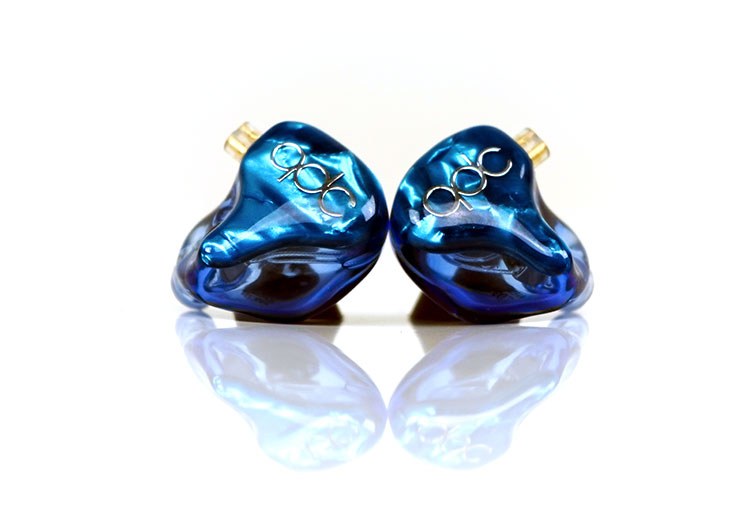
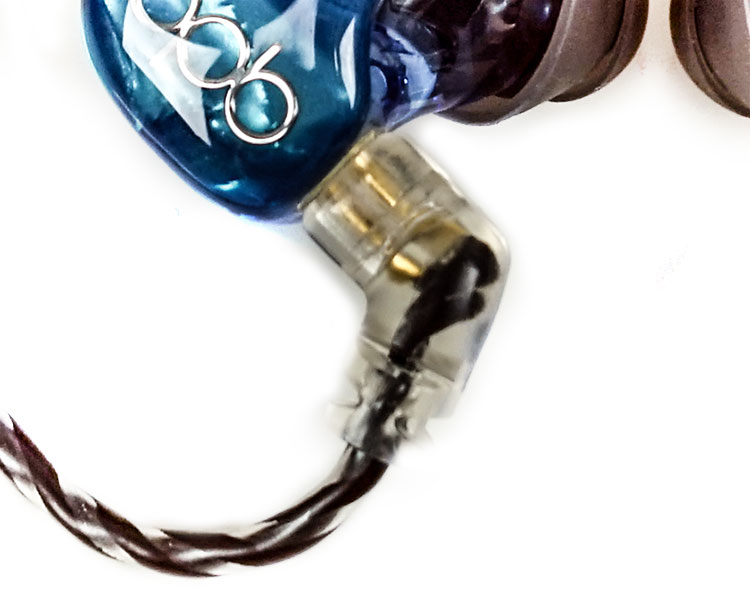
 Tips
Tips